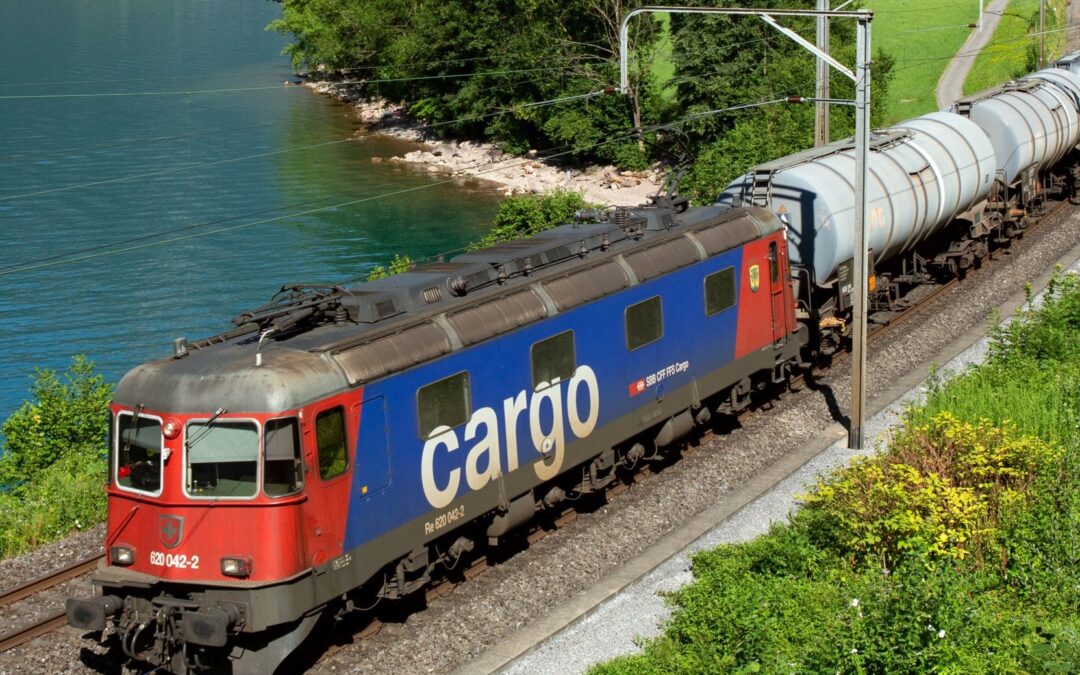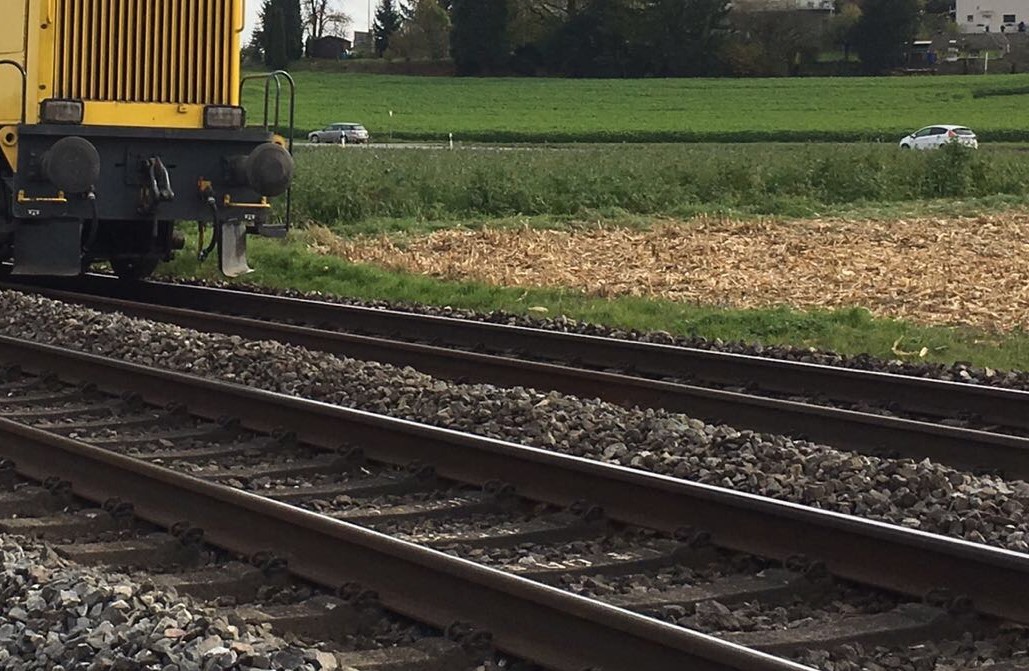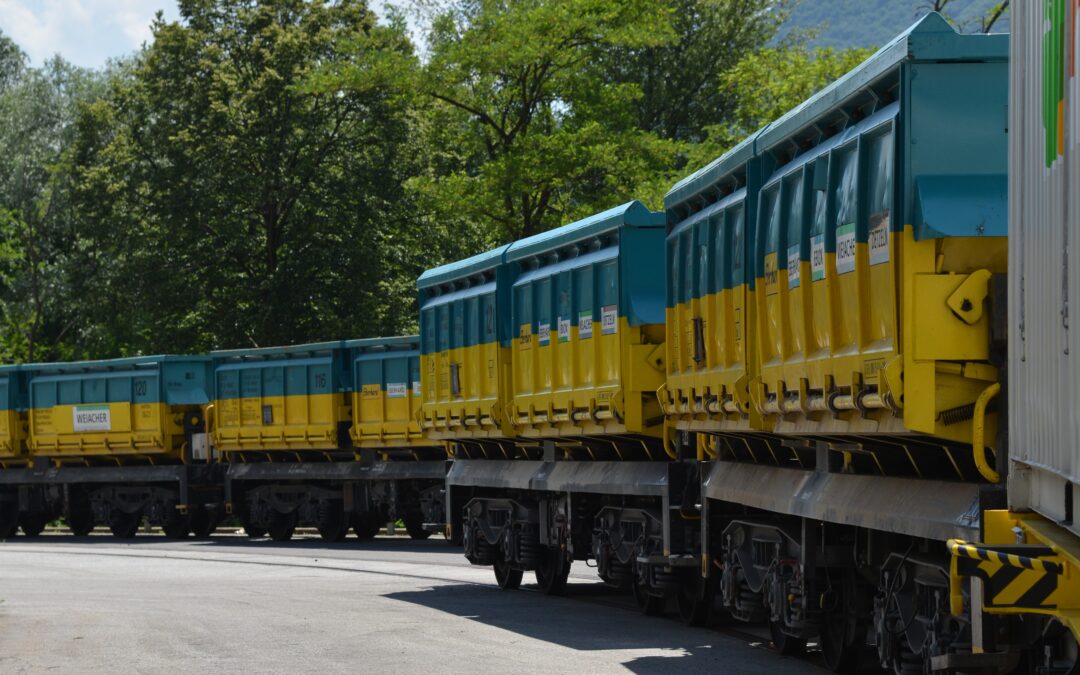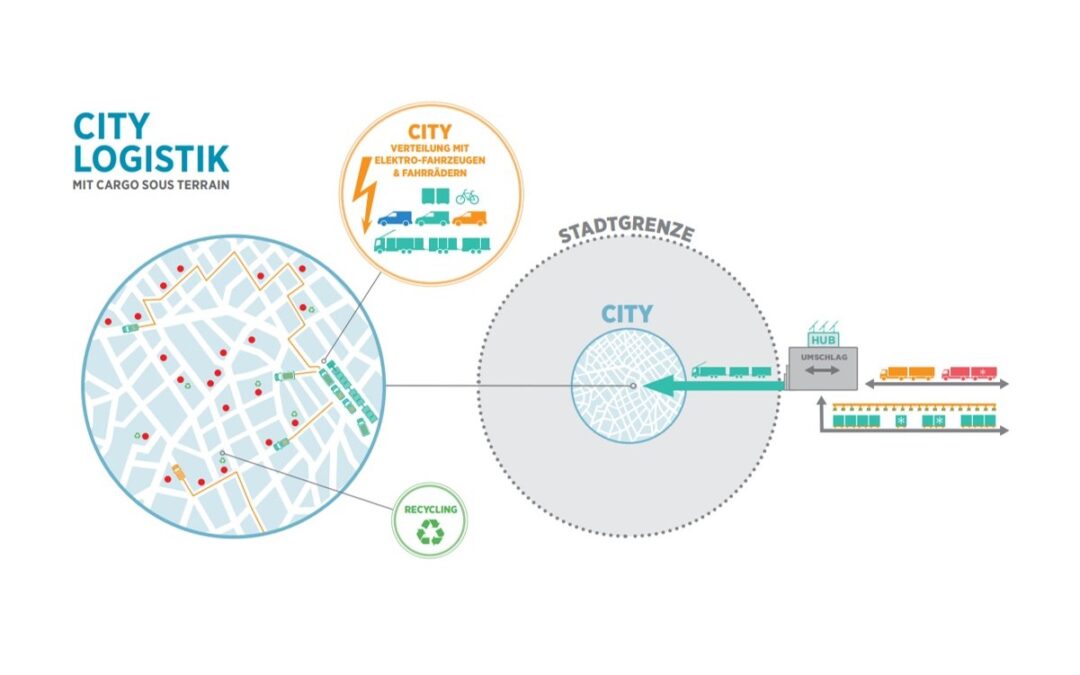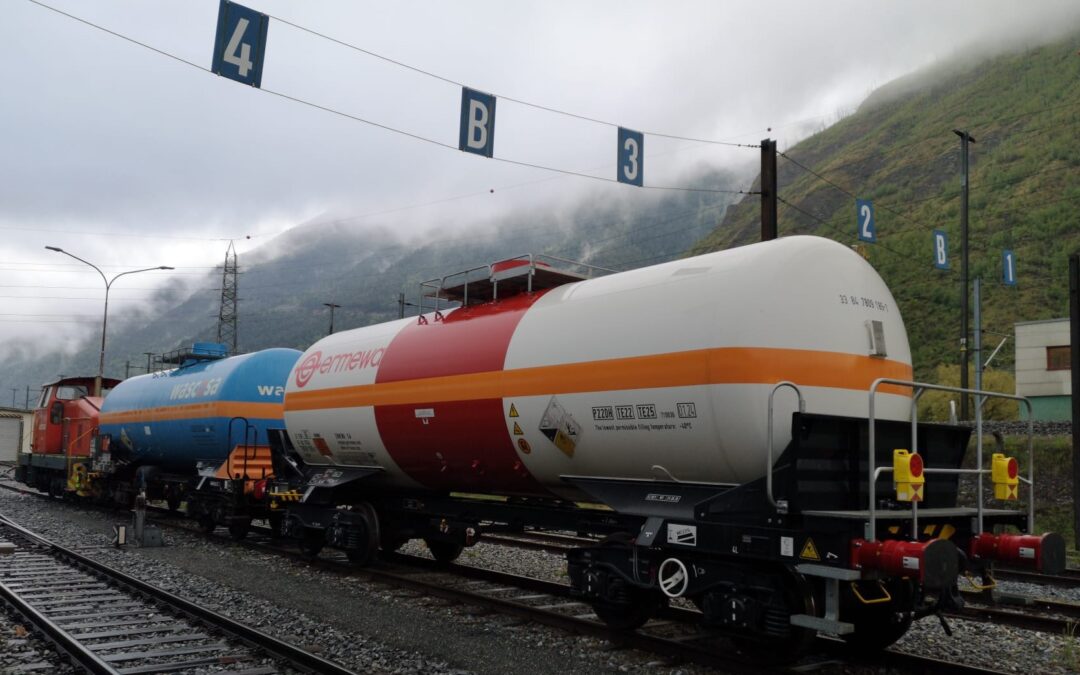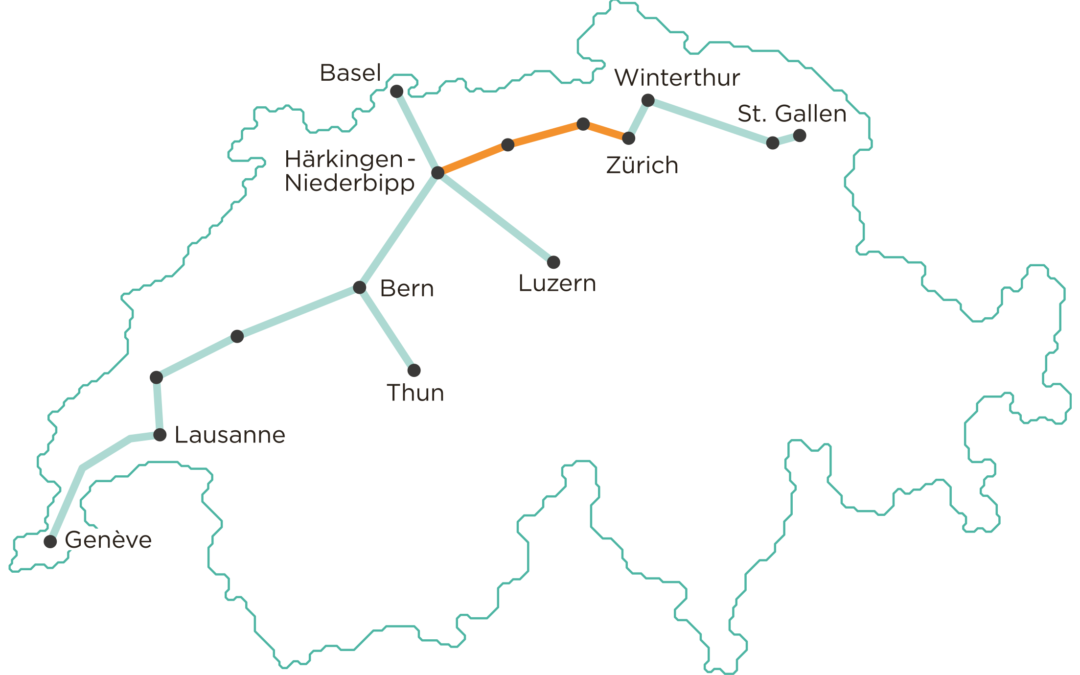[et_pb_section fb_built="1" _builder_version="4.16" global_colors_info="{}"][et_pb_row _builder_version="4.16" background_size="initial" background_position="top_left" background_repeat="repeat" global_colors_info="{}"][et_pb_column type="4_4" _builder_version="4.16" custom_padding="|||" global_colors_info="{}" custom_padding__hover="|||"][et_pb_text _builder_version="4.18.0" background_size="initial" background_position="top_left" background_repeat="repeat" global_colors_info="{}"]
With the opening of the Ceneri Base Tunnel in December 2020, another piece of the puzzle for an efficient north-south connection through Switzerland will be completed. However, the expansion of the international freight corridor is delayed by at least a decade. As a result, the productivity gains in international combined transport are only half as great as originally planned.
The Federal Council acknowledges the delayed implementation in principle and presents a "package of measures to strengthen modal shift" in the modal shift report of 13 November 2019. However, from the perspective of the Swiss freight transport industry, the proposed measures are not sufficient. In order to maintain the competitiveness of UCT (Unaccompanied Combined Transport) in transalpine traffic and to continue the modal shift, the industry is calling for additional measures.
Delayed implementation of the modal shift
With the opening of the Ceneri Base Tunnel in December 2020, the NRLA project will be officially completed. However, the benefits for freight traffic in Alpine transit through Switzerland will only materialise with a considerable time delay. Numerous factors contribute to the fact that the productivity of the resources used - locomotives, personnel, railway wagons, etc. - cannot be increased by far to the extent and in the time frame originally planned:
- The delayed expansion of the feeder lines in the north makes it impossible to operate 740 m trains.
- Frequent and internationally uncoordinated construction sites with diversions and temporary capacity bottlenecks prevent the expected reduction in travel time and lead to continuously increasing quality deficits. The consequences are delays and inefficient use of resources.
- Due to the non-coordinated international train path planning, the travel time savings in Switzerland will fizzle out at the borders for the time being.
- The remaining gradients of the line and the operational concept of the Gotthard Base Tunnel still require the use of a second locomotive for heavy trains.
Under these conditions, combined transport operators can realise at most half of the originally expected productivity effects. In order to maintain the current volume in transalpine combined transport and to gain additional traffic volumes in the medium term with regard to the modal shift target, the Swiss freight transport industry proposes a longer-term orientation of the modal shift policy until 2030 with additional measures.
Extension of the payment framework for the promotion of transalpine UCT until 2030
In order not to jeopardise the positive results of the current modal shift policy, the promotion of transalpine UCT must not be suspended prematurely. From the market's point of view, an extension of the funding measures until 2030 is necessary. Only from 2030 onwards can the planned further productivity effects be expected to be realised.
Furthermore, according to the monitoring of the Federal Office of Transport, the quality deficits of CT trains have continuously increased. While 75% of trains were less than one hour late in 2009, only 55% of all trains were late in the first half of 2019. Today, 12% of trains are even delayed for 12 hours or more. These quality deficits, driven by the expansion of the corridor infrastructure with numerous construction sites and capacity restrictions, will continue to weigh heavily on productivity until at least 2030.
The 2030 time horizon also creates the necessary investment security. Transport companies will invest in containers and craneable trailers, operators in rail wagons and terminals, and railway companies in locomotives if longer-term use of these capital goods is ensured.
Subsidies for operating compensation for UCT amounting to CHF 55 million annually from 2024
An efficient railway infrastructure in combination with train path prices at the level of the neighbouring countries Germany and Italy enables Switzerland to operate combined transport on its own account - this guiding principle still holds true. However, the operational and infrastructural conditions on the north-south corridor through Switzerland do not meet these requirements either at present or in the coming years. During this period, combined transport operators and railway companies will be able to increase productivity by a maximum of half of the originally planned value when the NRLA is completed.
It is true that the Swiss track price revision 2021 - which lowers the base price for freight transport and introduces discounts for long trains - makes a significant contribution to supporting UCT. Nevertheless, a gap of about half of the operating compensation of the reference year 2018 remains, amounting to CHF 110 million.
Based on this analysis of the situation, the freight transport industry demands that unaccompanied combined transport (UCT) be supported with operating contributions of CHF 55 million per year until 2030. This will enable UCT to maintain the current modal shift volume and, if necessary, to largely absorb traffic growth. Should the framework conditions improve more quickly than assumed - for example through a significant improvement in quality or a sustainable optimisation of the international timetables - additional traffic volumes could continue to be gained for UCT.
With the expected further growth of UCT until 2030, the reduction path of subsidies per consignment would again be significantly improved. Whereas in 2011 an average of CHF 173 in operating subsidies was paid per shifted truckload, in 2018 this figure was still CHF 116. According to the ideas of the freight transport industry, this amount would drop further to CHF 40-45 per shifted truck by 2030.
Expansion of access routes in the north
The NRLA concept for promoting rail freight transport depends on efficient, high-performance access lines to the base tunnels in order to ensure the supply of Europe's highest-demand economic locations. After the commissioning of the 4 m corridor, the situation will be as follows:
- 3 access lines in Italy - via Chiasso, Luino and Domodossola
- 2 lines in Switzerland - via Gotthard and Lötschberg base tunnels
- 1 access line north of Basel - via Karlsruhe - Mannheim - Cologne - Benelux
An alternative must urgently be created for the bottleneck in the north. The only efficient alternative route (flat track) is the route on the left bank of the Rhine via France. It is optimal for the high-volume Belgium - Italy route. In addition, there is a direct connection route with the corridor on the right bank of the Rhine, which serves to reduce the risk.
However, these routes do not yet correspond to the corridor parameters of the Swiss transit axis and therefore currently only carry a low volume of traffic. In order to make the capacities on these alternative routes more usable for UCT through Switzerland, the Zeebrugge/Antwerp - Strasbourg - Basel line and the Wörth - Lauterbourg - Strasbourg cross connection must be upgraded to the parameters 740 m train length, 4 m corner height, 2000 t with one locomotive, ETCS. This would also create a system in the north with two feeder lines and an alternative route on the left bank of the Rhine.
The expansion of a corridor-compliant alternative route via France is likely to be manageable in terms of costs. It is very much in the interest of Switzerland and its transit shift policy. To implement it, Switzerland needs a political initiative together with France and Belgium, which should lead to an international treaty on infrastructure development. Parliament should call on the Federal Council to take the corresponding initiative in the form of an international treaty. In addition, the expansion of the Rhine Valley railway in Germany must be pursued with vigour. The completion of this contractually agreed capacity increase has been postponed until 2040.
[/et_pb_text][/et_pb_column][/et_pb_row][/et_pb_section][et_pb_section fb_built="1" _builder_version="4.16" _module_preset="default" locked="on" global_colors_info="{}"][et_pb_row _builder_version="4.16" _module_preset="default" global_colors_info="{}"][et_pb_column type="4_4" _builder_version="4.16" _module_preset="default" global_colors_info="{}"][et_pb_post_nav prev_text="Vorheriger Artikel" next_text="Nächster Artikel" _builder_version="4.16" _module_preset="default" global_colors_info="{}"][/et_pb_post_nav][/et_pb_column][/et_pb_row][/et_pb_section]
